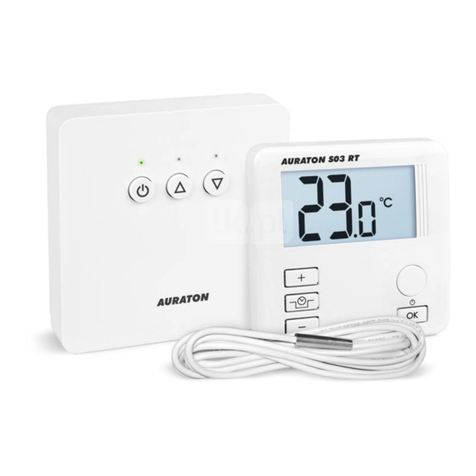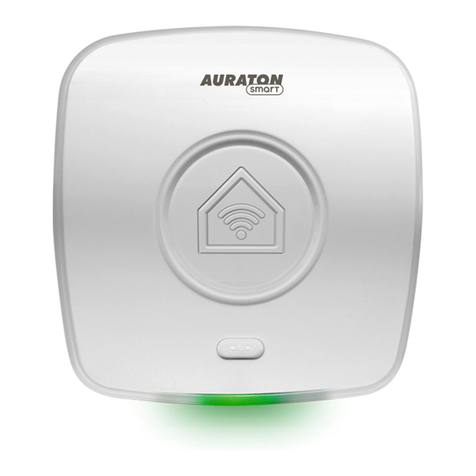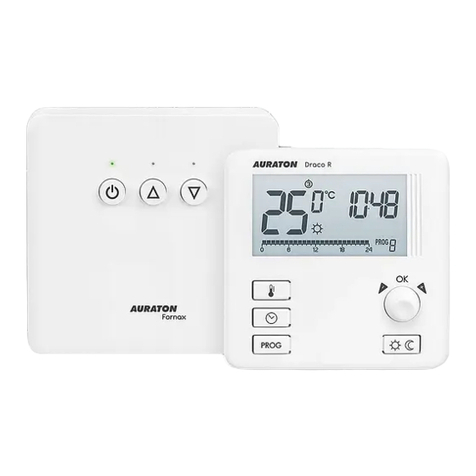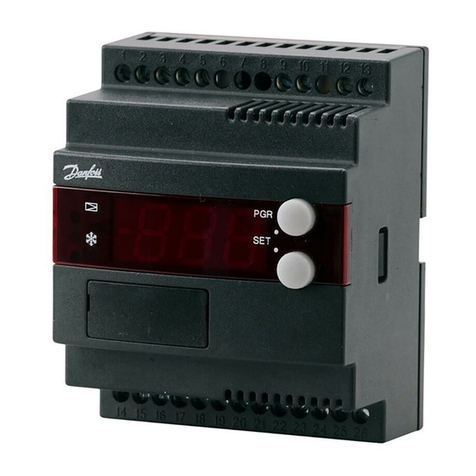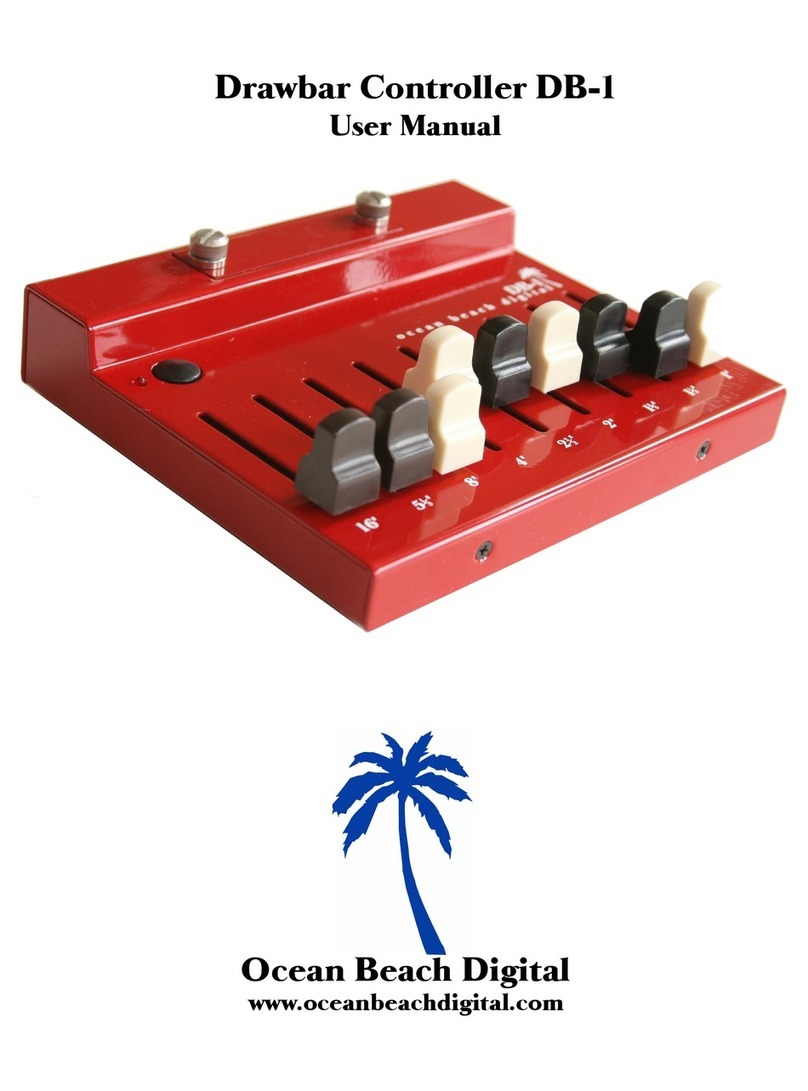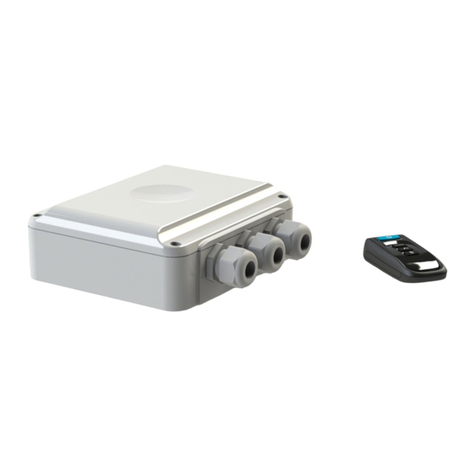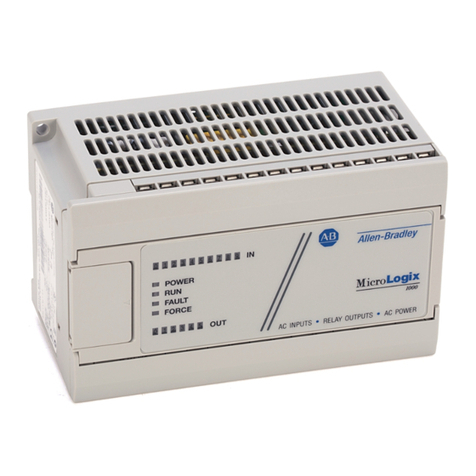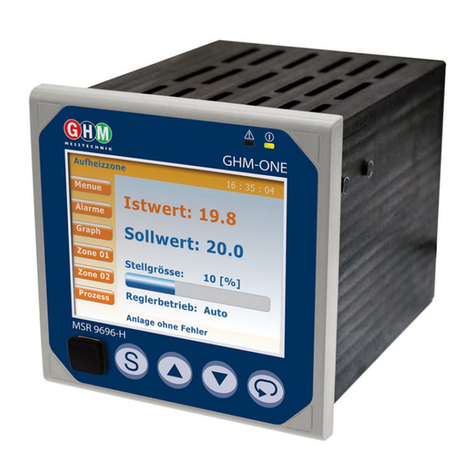AURATON S14 User manual

User manual
www.auraton.pl S14
dla oprogramowania w ver. F03 oraz F0A

AURATON S14
AURATON S14 is a modern processor-based controller intended for work
with central heating (CH) and hot domestic water (HDW) circulating
pumps. The controller may work with a boiler stove fireplace in a CH
system and with a forced draft coal or fine c oal fired CH stove.
Description of the display
3
1
The display of the AURATON S14 controller is divided into four parts.
Each part corresponds to a separate device supported by the controller:
Part A: Control of the central heating (CH) pump,
Part B:Control of the central heating (CH) pump, the automatically
reset actuator, or the second central heating pump (in the
fireplace circuit),
Part C: Control of the hot domestic water (HDW) circulating pump,
Part D: Control of the fan (blower).
ON
OFF
S MIN
STOP LO
STOP HI
AUTO
%
A B C D
2
1
678910
34 52
ON
OFF
S MIN
STOP LO
STOP HI
AUTO
%
1. Temperature measured by individual sensors,
2. User's setting,
3. Counted operation time of the fan and the duration of the interval
between the blow-throughs,
4. Indicator of extinguished fire in the furnace,
5. Indicator of emergency shutdown of the fan,
6. Indicator of manual activation of the device ,
7. Indicator of ignition,
8. Indicator of fan power percentage value,
9. Indicator of forced operation (of the CH pump),
10. Indicator of sustained fire in the furnace.

AURATON S14
AURATON S14 is a modern processor-based controller intended for work
with central heating (CH) and hot domestic water (HDW) circulating
pumps. The controller may work with a boiler stove fireplace in a CH
system and with a forced draft coal or fine c oal fired CH stove.
Description of the display
3
1
The display of the AURATON S14 controller is divided into four parts.
Each part corresponds to a separate device supported by the controller:
Part A: Control of the central heating (CH) pump,
Part B:Control of the central heating (CH) pump, the automatically
reset actuator, or the second central heating pump (in the
fireplace circuit),
Part C: Control of the hot domestic water (HDW) circulating pump,
Part D: Control of the fan (blower).
ON
OFF
S MIN
STOP LO
STOP HI
AUTO
%
A B C D
2
1
678910
34 52
ON
OFF
S MIN
STOP LO
STOP HI
AUTO
%
1. Temperature measured by individual sensors,
2. User's setting,
3. Counted operation time of the fan and the duration of the interval
between the blow-throughs,
4. Indicator of extinguished fire in the furnace,
5. Indicator of emergency shutdown of the fan,
6. Indicator of manual activation of the device ,
7. Indicator of ignition,
8. Indicator of fan power percentage value,
9. Indicator of forced operation (of the CH pump),
10. Indicator of sustained fire in the furnace.

General comments
1. Buttons "A, B, C, D" for configuration of individual settings,
2. Terminals for connecting temperature sensors (SR1 through SR3),
3. Terminals for connecting actuators (OUT1 through OUT5),
4. Terminals for connecting the power supply,
5. "+" (plus) button - higher value,
6. "OK" button - approval,
7. "-" (minus) button - lower value,
8. Main power supply switch.
5
1. Before connecting the cables to the controller, remove the protective
plugs by cutting them off.
2. Only one sensor is provided (with an approx. 2.5 m long cable). If an
expanded functionality of the controller is required, additional
temperature sensors must be bought (option). If the length of the
cable is inadequate, a sensor with an approx. 15 m long cable can be
purchased.
4
1
23 4
5
6
7
8
0
I
AB C D
SR1 SR2 SR3
OUT1 OUT2 OUT3 OUT4 OUT5 IN
Description of buttons
and cable terminals
2
NOTE: In order to access the cable terminals, remove the front cover.
3Description of the controller working
in a CH circuit (part A of the display)
The controller also has the GUARD functions which prevents the stalling
process in the rotor of the pump when it is not in use. Also, a built in
processor starts the pump for 30 seconds after the heating season is over.
In order for the system to work after the heating season, the controller
must be switched on.
A
123
4
5
1. CH pump operation indicator,
2. CH pump's sensor indicator,
3. Manual mode operation indicator,
4. Current temperature on the CH sensor (SR1),
5. Set temperature indicator.
The controller-pump assembly forces the water to circulate in a CH
system with a coal-fired boiler or a gas boiler without a system controlling
the operation of the pump. The controller's sensor measures the
temperature of the water on the supply side of the CH system.
In a CH system with a coal-fired boiler, the controller switches off the
circulation pump after the flame in the boiler is extinguished. Pumping of
water is not recommended when the flame is extinguished because the
air draft into the chimney causes faster cooling of the water in the boiler
faster than in the radiators. The optimum temperature can be set on the
controller's scale (most often approx. 40°C).
In a CH system with a gas boiler, the temperature must be lower than the
temperature set on the CH boiler's thermostat. If the temperature is set
above the dew point, it prevents condensation in the boiler during the
heating of the water in the CH system.

General comments
1. Buttons "A, B, C, D" for configuration of individual settings,
2. Terminals for connecting temperature sensors (SR1 through SR3),
3. Terminals for connecting actuators (OUT1 through OUT5),
4. Terminals for connecting the power supply,
5. "+" (plus) button - higher value,
6. "OK" button - approval,
7. "-" (minus) button - lower value,
8. Main power supply switch.
5
1. Before connecting the cables to the controller, remove the protective
plugs by cutting them off.
2. Only one sensor is provided (with an approx. 2.5 m long cable). If an
expanded functionality of the controller is required, additional
temperature sensors must be bought (option). If the length of the
cable is inadequate, a sensor with an approx. 15 m long cable can be
purchased.
4
1
23 4
5
6
7
8
0
I
AB C D
SR1 SR2 SR3
OUT1 OUT2 OUT3 OUT4 OUT5 IN
Description of buttons
and cable terminals
2
NOTE: In order to access the cable terminals, remove the front cover.
3Description of the controller working
in a CH circuit (part A of the display)
The controller also has the GUARD functions which prevents the stalling
process in the rotor of the pump when it is not in use. Also, a built in
processor starts the pump for 30 seconds after the heating season is over.
In order for the system to work after the heating season, the controller
must be switched on.
A
123
4
5
1. CH pump operation indicator,
2. CH pump's sensor indicator,
3. Manual mode operation indicator,
4. Current temperature on the CH sensor (SR1),
5. Set temperature indicator.
The controller-pump assembly forces the water to circulate in a CH
system with a coal-fired boiler or a gas boiler without a system controlling
the operation of the pump. The controller's sensor measures the
temperature of the water on the supply side of the CH system.
In a CH system with a coal-fired boiler, the controller switches off the
circulation pump after the flame in the boiler is extinguished. Pumping of
water is not recommended when the flame is extinguished because the
air draft into the chimney causes faster cooling of the water in the boiler
faster than in the radiators. The optimum temperature can be set on the
controller's scale (most often approx. 40°C).
In a CH system with a gas boiler, the temperature must be lower than the
temperature set on the CH boiler's thermostat. If the temperature is set
above the dew point, it prevents condensation in the boiler during the
heating of the water in the CH system.

76
3.2.1. Switching the controller on
ut the switch n the "I" position. After the controller is switched
on, all segments of the display are lit for about 2 seconds and the software
version is displayed. Then the " symbol, the current sensor
temperature (4), and the set temperature (5) are shown on the display.
P i
"
[butt]
grzej]
3.1.3. Connecting the power supply cable of the pump
In the controller, the pump's cable must be connected to the OUT1
terminal. In the pump, connect the green or yellow-green wire
(grounding or protective zero) to the " " terminal and connect the blue
wire to the "N" terminal. Connect the brown wire to the "L" terminal.
3.1. Installation
3.1.1. Mounting the controller
The controller must be mounted on a wall or another support using two
screws (the concrete anchors with screws are delivered with the
controller). The cables extending from the controller must be fixed to the
wall with cable clips.
3.1.2. Mounting the sensor
Before installing the cables, remove the protective plugs by cutting them
off. In the controller, connect the temperature sensor to the SR1
terminals. Then install the sensor on an uncovered outlet pipe connected
to the CH boiler (as close to the boiler as possible).
NOTE: If a coal-fired boiler and a gas-fired boiler work in the same CH
system, the sensor should be installed in a location where the two
outlets merge and must be insulated.
3.1.4. Connection check
Check if the wire is connected properly and fix the lid of the pump motor's
compression box with screws.
3.1.5. Connecting the controller
NOTE: The wires and cables may be connected only when the
power supply is cut off.
After the wires are secured to prevent accidental ripping, connect the
power supply cable to a 230V AC/50 Hz power outlet with a grounding
pin.
NOTE: The ambient temperature in the place where the controller
is installed must not exceed 40°C.
3.2. Operation of the controller
0
I
3.2.3. Changing the temperature
Press the "A" button under the temperature setting. The digits begin to
blink and indicate the value of the current setting. Using the "+" (increase)
or "-" (decrease) button, set the desired temperature. After the
temperature value is set, approve it (within 10 seconds) by pressing the
"OK" button. Otherwise, the changed value will not be saved and the
controller will return to the previous setting.
3.2.4. Changing the hysteresis
Press the "A" button under the temperature setting. The digits begin to
blink and indicate the value of the current setting. Display the hysteresis
setting (HI) by pressing the "A" button again. Using the "+" or "-" button,
set the required hysteresis value in the range of 2°C to 10°C (with a 2°C
increment). After the value is set, approve it (within 10 seconds) by
pressing the "OK". Otherwise, the changed setting will not be saved and
the controller will return to the previous setting.
Example: If the temperature setting is 40°C and the hysteresis is 4°C, the
pump will start at 42°C and will stop at 38°C.
3.2.5. Changing the forced pump operation mode
Press the "A" button under the temperature setting. The digits begin to
blink and indicate the value of the current setting. Display the hysteresis
setting (HI) by pressing the "A" button again. After you press the "A"
button one more time, the value of 85°C will be displayed in the
temperature section and on the right side of the display the symbol of
forced pump operation ( ). Za pomocą przycisku „+” lub „–” will be
shown. Using the "+" or "-" button, select a setting where, after the
temperature exceeds 85°C, the pump is in continuous operation ( ) or
shuts down ( ).
After the pump operation mode is set, approve it (within 10 seconds) by
pressing the "OK" button. Otherwise, the changed setting will not be
saved and the controller will return to the previous setting.
^
^.
^
3.2.6. Automatic operation
After this operation mode is set, the controller starts and stops the pump
depending on the set temperature. In the CH system, the pump is started
when the temperature in the location of the sensor exceeds the set value
and stopped when the temperature drops below the value set in the
controller, taking into account the hysteresis.
3.2.2. Description of the display
The top part of the display (4) shows the current temperature of the
sensor while the bottom part (5) shows the set temperature. Movement
of the blades on the indicator (1) indicates operation of the CH pump.
!

76
3.2.1. Switching the controller on
ut the switch n the "I" position. After the controller is switched
on, all segments of the display are lit for about 2 seconds and the software
version is displayed. Then the " symbol, the current sensor
temperature (4), and the set temperature (5) are shown on the display.
P i
"
[butt]
grzej]
3.1.3. Connecting the power supply cable of the pump
In the controller, the pump's cable must be connected to the OUT1
terminal. In the pump, connect the green or yellow-green wire
(grounding or protective zero) to the " " terminal and connect the blue
wire to the "N" terminal. Connect the brown wire to the "L" terminal.
3.1. Installation
3.1.1. Mounting the controller
The controller must be mounted on a wall or another support using two
screws (the concrete anchors with screws are delivered with the
controller). The cables extending from the controller must be fixed to the
wall with cable clips.
3.1.2. Mounting the sensor
Before installing the cables, remove the protective plugs by cutting them
off. In the controller, connect the temperature sensor to the SR1
terminals. Then install the sensor on an uncovered outlet pipe connected
to the CH boiler (as close to the boiler as possible).
NOTE: If a coal-fired boiler and a gas-fired boiler work in the same CH
system, the sensor should be installed in a location where the two
outlets merge and must be insulated.
3.1.4. Connection check
Check if the wire is connected properly and fix the lid of the pump motor's
compression box with screws.
3.1.5. Connecting the controller
NOTE: The wires and cables may be connected only when the
power supply is cut off.
After the wires are secured to prevent accidental ripping, connect the
power supply cable to a 230V AC/50 Hz power outlet with a grounding
pin.
NOTE: The ambient temperature in the place where the controller
is installed must not exceed 40°C.
3.2. Operation of the controller
0
I
3.2.3. Changing the temperature
Press the "A" button under the temperature setting. The digits begin to
blink and indicate the value of the current setting. Using the "+" (increase)
or "-" (decrease) button, set the desired temperature. After the
temperature value is set, approve it (within 10 seconds) by pressing the
"OK" button. Otherwise, the changed value will not be saved and the
controller will return to the previous setting.
3.2.4. Changing the hysteresis
Press the "A" button under the temperature setting. The digits begin to
blink and indicate the value of the current setting. Display the hysteresis
setting (HI) by pressing the "A" button again. Using the "+" or "-" button,
set the required hysteresis value in the range of 2°C to 10°C (with a 2°C
increment). After the value is set, approve it (within 10 seconds) by
pressing the "OK". Otherwise, the changed setting will not be saved and
the controller will return to the previous setting.
Example: If the temperature setting is 40°C and the hysteresis is 4°C, the
pump will start at 42°C and will stop at 38°C.
3.2.5. Changing the forced pump operation mode
Press the "A" button under the temperature setting. The digits begin to
blink and indicate the value of the current setting. Display the hysteresis
setting (HI) by pressing the "A" button again. After you press the "A"
button one more time, the value of 85°C will be displayed in the
temperature section and on the right side of the display the symbol of
forced pump operation ( ). Za pomocą przycisku „+” lub „–” will be
shown. Using the "+" or "-" button, select a setting where, after the
temperature exceeds 85°C, the pump is in continuous operation ( ) or
shuts down ( ).
After the pump operation mode is set, approve it (within 10 seconds) by
pressing the "OK" button. Otherwise, the changed setting will not be
saved and the controller will return to the previous setting.
^
^.
^
3.2.6. Automatic operation
After this operation mode is set, the controller starts and stops the pump
depending on the set temperature. In the CH system, the pump is started
when the temperature in the location of the sensor exceeds the set value
and stopped when the temperature drops below the value set in the
controller, taking into account the hysteresis.
3.2.2. Description of the display
The top part of the display (4) shows the current temperature of the
sensor while the bottom part (5) shows the set temperature. Movement
of the blades on the indicator (1) indicates operation of the CH pump.
!

98
1. Current temperature on the
CH sensor (SR2)
2. Indicator of the set CH
temperature in the
fireplace circuit,
3. Indicator of the set
temperature of the
automatically reset
actuator or the second CH
pump,
4. Indicator of manual activation
of the CH pump,
5. CH pump operation indicator,
6. Indicator of operation of a tee valve or the second CH pump,
7. Indicator of manual activation of a tee valve or the second CH pump.
3.2.7. Manual mode - continuous operation
In order to manually switch on the circulating pump (regardless of the
current temperature at the SR1 (CH) sensor), press the "A" button and
hold it pressed for 3 seconds.
The display will show the hand symbol " " (3). If you wish to switch off
the pump's manual operation, press the "A" button again and hold it
pressed for 3 seconds.
NOTE: When only the SR1 sensor is connected, the remaining functions
of the controller are inactive, i.e. there is no indication of operation of
CH pumps in the fire place circuit and of the control of the pump in the
HDW circuit.
[h]
3.3. Diagram of connection of the controller with
the pump at the CH boiler
0
I
AB C D
SR1 SR2 SR3
OUT1 OUT2 OUT3 OUT4 OUT5 IN
CH
boiler
Pump
230V
mains power supply
Temperature sensor
(fix with a band)
4Description of a controller working with
a CH pump and an automatically reset
actuator, or with a second CH pump -
a fireplace boiler stove circuit
(part B of the display)
467
1
5
B
23
AURATON S14 in a circuit with a boiler stove fireplace uses two control
outputs:
one for the water pump in the fireplace circuit;
ź
one for an actuated valve or the second pump, which is required for
ź
proper cooperation between the boiler stove fireplace with the CH
circuit.
After the power supply is switched on, temperature in the water jacket of
the boiler stove fireplace is measured (with the digital sensor); the
temperature signal can be divided into two independent channels.
Depending on the temperature of water in the fireplace circuit, the
controller automatically starts or stops the CH pump of the fireplace and
starts the valve or the second pump.
The AURATON S14 controller also has the GUARD functions which
prevents the stalling process in the rotor of the pump when it is not in use.
After the heating season, AURATON S14 automatically starts the pump
for 30 seconds every 14 days.
In order for the system to work after the heating season, the controller
must be switched on at all times.

98
1. Current temperature on the
CH sensor (SR2)
2. Indicator of the set CH
temperature in the
fireplace circuit,
3. Indicator of the set
temperature of the
automatically reset
actuator or the second CH
pump,
4. Indicator of manual activation
of the CH pump,
5. CH pump operation indicator,
6. Indicator of operation of a tee valve or the second CH pump,
7. Indicator of manual activation of a tee valve or the second CH pump.
3.2.7. Manual mode - continuous operation
In order to manually switch on the circulating pump (regardless of the
current temperature at the SR1 (CH) sensor), press the "A" button and
hold it pressed for 3 seconds.
The display will show the hand symbol " " (3). If you wish to switch off
the pump's manual operation, press the "A" button again and hold it
pressed for 3 seconds.
NOTE: When only the SR1 sensor is connected, the remaining functions
of the controller are inactive, i.e. there is no indication of operation of
CH pumps in the fire place circuit and of the control of the pump in the
HDW circuit.
[h]
3.3. Diagram of connection of the controller with
the pump at the CH boiler
0
I
AB C D
SR1 SR2 SR3
OUT1 OUT2 OUT3 OUT4 OUT5 IN
CH
boiler
Pump
230V
mains power supply
Temperature sensor
(fix with a band)
4Description of a controller working with
a CH pump and an automatically reset
actuator, or with a second CH pump -
a fireplace boiler stove circuit
(part B of the display)
467
1
5
B
23
AURATON S14 in a circuit with a boiler stove fireplace uses two control
outputs:
one for the water pump in the fireplace circuit;
ź
one for an actuated valve or the second pump, which is required for
ź
proper cooperation between the boiler stove fireplace with the CH
circuit.
After the power supply is switched on, temperature in the water jacket of
the boiler stove fireplace is measured (with the digital sensor); the
temperature signal can be divided into two independent channels.
Depending on the temperature of water in the fireplace circuit, the
controller automatically starts or stops the CH pump of the fireplace and
starts the valve or the second pump.
The AURATON S14 controller also has the GUARD functions which
prevents the stalling process in the rotor of the pump when it is not in use.
After the heating season, AURATON S14 automatically starts the pump
for 30 seconds every 14 days.
In order for the system to work after the heating season, the controller
must be switched on at all times.

4.1.3. Connecting the power supply cable of the CH pump
The CH pump must be connected to the OUT2 (L, ,N). terminals. In the
pump, connect the green or yellow-green wire (grounding or protective
zero) to the " " terminal, the blue wire - to the "N" terminal, and the
brown wire - to the "L" terminal.
[u]
[u]
1110
4.1. Installation
4.1.1. Mounting the controller
The controller must be mounted on a wall or another support using two
screws (the concrete anchors with screws are delivered with the
controller). The cables extending from the controller must be fixed to the
wall with cable clips.
4.1.2. Mounting the sensor
Before installing the cables, remove the protective plugs by cutting them
off. In the controller, connect the temperature sensor to the SR2
terminals. Then install the sensor on the outside of the fireplace's water
jacket or on an uncovered outlet pipe connected to the CH boiler (as close
to the boiler as possible). The sensor must not be immersed in liquids or
installed at the fireplace smoke outlets.
4.1.4. Connecting the power supply cable to the valve (or the
second CH pump)
In the controller, the valve's cable must be connected to the OUT3
terminal (L, ,N). In the valve, connect the green or yellow-green wire
(grounding or protective zero) to the terminal (grounding symbol), the
blue wire - to the "N" terminal, and the brown wire - to the "L" terminal.
[u]
4.1.5. Connecting the controller
After the wires are secured to prevent accidental ripping, connect the
power supply cable on the side of the controller to the
IN (L, , N) terminals. Then connect the cable to a 230V AC/50 Hz power
outlet with a grounding pin.
[u]
4.2. Operation of the controller
4.2.1. Switching the controller on
Set the power supply switch in the "I" position. After power is
switched on, all segments of the display light up. Then the controller
indicates the current temperature of measured by the sensor.
[on/o
0
I
4.2.2. Settings range
Temperature (from 0°C to 99°C) is measured by the SR2 sensor,
ź
The CH pump is controlled using the OUT2 output,
ź
The automatically reset actuator and the second CH pump is controlled
ź
using the OUT3 output,
The settings range for the CH pump and the automatically reset
ź
actuator (or the second CH pump) is equal to 10°C to 85°C, and the
hysteresis (the temperature difference between the start and the stop
settings) is adjustable in the range of 2°C to 10°C.
4.2.3. Changing the temperature
Press the "B" button for a short time. When the CH set temperature
indicator (left) in the fireplace circuit starts blinking, use the "+" or "-"
button to set the desired temperature.
Press the "B" button again. When the CH set temperature indicator
(right) of the valve or the second CH pump in the fireplace circuit starts
blinking, use the "+" or "-" button to set the desired temperature. After
the value is set, approve it (within 10 seconds) by pressing the "OK"
button. Otherwise, the changed value will not be saved and the controller
will return to the previous setting.
4.2.4. Changing the hysteresis
Press the "B" button under the temperature setting. The digits begin to
blink and indicate the value of the current setting (left indicator). When
the "B" button is pressed again, the right temperature indicator starts
blinking. Press the "B" button in order to edit the value of hysteresis (HI),
in the range of 2°C to 10°C, for the CH pumps (left indicator). Then use the
"+" or "-" button to set the required hysteresis value. When the "B"
button is pressed again, the hysteresis (HI) is set, in the range of 2°C to
10°C, for the valve or the second CH pump (right indicator). Then use the
"+" or "-" button to set the required hysteresis value. After the value is
set, approve it (within 10 seconds) by pressing the "OK" button.
Otherwise, the changed setting will not be saved and the controller will
return to the previous setting.
Example: If the temperature setting is 40°C and the hysteresis is 4°C, the
pump will start at 42°C and will stop at 38°C.
NOTE: The ambient temperature in the place where the controller
is installed must not exceed 40 °C.
NOTE: The wires and cables may be connected only when the
power supply is cut off.
!

4.1.3. Connecting the power supply cable of the CH pump
The CH pump must be connected to the OUT2 (L, ,N). terminals. In the
pump, connect the green or yellow-green wire (grounding or protective
zero) to the " " terminal, the blue wire - to the "N" terminal, and the
brown wire - to the "L" terminal.
[u]
[u]
1110
4.1. Installation
4.1.1. Mounting the controller
The controller must be mounted on a wall or another support using two
screws (the concrete anchors with screws are delivered with the
controller). The cables extending from the controller must be fixed to the
wall with cable clips.
4.1.2. Mounting the sensor
Before installing the cables, remove the protective plugs by cutting them
off. In the controller, connect the temperature sensor to the SR2
terminals. Then install the sensor on the outside of the fireplace's water
jacket or on an uncovered outlet pipe connected to the CH boiler (as close
to the boiler as possible). The sensor must not be immersed in liquids or
installed at the fireplace smoke outlets.
4.1.4. Connecting the power supply cable to the valve (or the
second CH pump)
In the controller, the valve's cable must be connected to the OUT3
terminal (L, ,N). In the valve, connect the green or yellow-green wire
(grounding or protective zero) to the terminal (grounding symbol), the
blue wire - to the "N" terminal, and the brown wire - to the "L" terminal.
[u]
4.1.5. Connecting the controller
After the wires are secured to prevent accidental ripping, connect the
power supply cable on the side of the controller to the
IN (L, , N) terminals. Then connect the cable to a 230V AC/50 Hz power
outlet with a grounding pin.
[u]
4.2. Operation of the controller
4.2.1. Switching the controller on
Set the power supply switch in the "I" position. After power is
switched on, all segments of the display light up. Then the controller
indicates the current temperature of measured by the sensor.
[on/o
0
I
4.2.2. Settings range
Temperature (from 0°C to 99°C) is measured by the SR2 sensor,
ź
The CH pump is controlled using the OUT2 output,
ź
The automatically reset actuator and the second CH pump is controlled
ź
using the OUT3 output,
The settings range for the CH pump and the automatically reset
ź
actuator (or the second CH pump) is equal to 10°C to 85°C, and the
hysteresis (the temperature difference between the start and the stop
settings) is adjustable in the range of 2°C to 10°C.
4.2.3. Changing the temperature
Press the "B" button for a short time. When the CH set temperature
indicator (left) in the fireplace circuit starts blinking, use the "+" or "-"
button to set the desired temperature.
Press the "B" button again. When the CH set temperature indicator
(right) of the valve or the second CH pump in the fireplace circuit starts
blinking, use the "+" or "-" button to set the desired temperature. After
the value is set, approve it (within 10 seconds) by pressing the "OK"
button. Otherwise, the changed value will not be saved and the controller
will return to the previous setting.
4.2.4. Changing the hysteresis
Press the "B" button under the temperature setting. The digits begin to
blink and indicate the value of the current setting (left indicator). When
the "B" button is pressed again, the right temperature indicator starts
blinking. Press the "B" button in order to edit the value of hysteresis (HI),
in the range of 2°C to 10°C, for the CH pumps (left indicator). Then use the
"+" or "-" button to set the required hysteresis value. When the "B"
button is pressed again, the hysteresis (HI) is set, in the range of 2°C to
10°C, for the valve or the second CH pump (right indicator). Then use the
"+" or "-" button to set the required hysteresis value. After the value is
set, approve it (within 10 seconds) by pressing the "OK" button.
Otherwise, the changed setting will not be saved and the controller will
return to the previous setting.
Example: If the temperature setting is 40°C and the hysteresis is 4°C, the
pump will start at 42°C and will stop at 38°C.
NOTE: The ambient temperature in the place where the controller
is installed must not exceed 40 °C.
NOTE: The wires and cables may be connected only when the
power supply is cut off.
!

1312
4.2.5. Changing the forced pump operation mode
Press the "B" button under the temperature setting. The digits begin to
blink and indicate the value of the current setting (left indicator). When
the "B" button is pressed again, the right temperature indicator starts
blinking. Press the "B" button again in order to edit the hysteresis (HI)
value of the left indicator. Press the "B" one more time in order to set the
hysteresis (HI) value of the right indicator.
After you press the "B" button one more time, the value of 85°C will be
displayed in the temperature section and on the right side of the display
the symbol of forced pump operation ( ) will be shown. The "+" or "-"
button can be used to make the pump work in a continuous manner ( ) or
stop ( ) after the temperature of 85°C is exceeded. Also, the "+" or "-"
button can be used to set the maximum value, equal to 55°C, which, when
exceeded, will cause the CH pump to stop (e.g. in the case of floor
heating).
The operation of the valve or the second CH pump can be set in the same
manner. After the operation mode is set, it must be confirmed (within 10
seconds) by pressing the "OK" button. Otherwise, the changed setting
will not be saved and the controller will return to the previous setting.
^
^
^
4.2.6. Automatic operation
The controller starts or stops the pump and the valve depending on the
set temperature value. In the CH system, the pump and the valve are
started when the temperature in the location of the sensor exceeds the
set value and stopped when the temperature drops below the value set
in the controller, taking into account the hysteresis.
4.2.7. Tryb ręczny - praca ciągła
Step 1 – In order to manually switch on the CH pump in the fireplace
circuit (regardless of the current temperature at the SR2 sensor), press
the "B" button for 3 seconds. The display will show the hand symbol " "
on the left side of the pictogram indicating operation of the CH pump in
the fireplace circuit.
Step 2 – If you press the "B" button again for 3 seconds, the manual
mode " " will be activated for the tee valve (or the second CH pump)
" " (hand symbol on the right side).
S 3 – "B"
Step 4 – f you press the "B" button yet again for 3 seconds, the manual
mode " " will be activated for the automatically reset valve (or the
second CH pump) in the fireplace circuit (right side).
[h]
tep If you press the button one more time for 3 seconds, the
manual mode " " will be activated for the CH pump (left side).
I
4.3. Wiring diagram
An example wiring diagram. This is a simplified diagram that does not
contain all the elements necessary for proper operation of the system.
1
7
23 4 5
8
9
6
230V mains
power supply
0
I
AB C D
SR1 SR2 SR3
OUT1 OUT2 OUT3 OUT4 OUT5 IN
1. Boiler stove fireplace, 6. Radiator,
2. Cut-off valve, 7. Compression vessel,
3. Pump, 8. Temperature sensor,
4. Exchanger , 9. CH boiler.
5. Automatically reset actuator,
NOTE: When only the SR2 sensor is connected, the remaining functions
of the controller are inactive, i.e. there is no indication of operation of
CH pump and of the control of the pump in the HDW circuit, and the
blower is not controlled.

1312
4.2.5. Changing the forced pump operation mode
Press the "B" button under the temperature setting. The digits begin to
blink and indicate the value of the current setting (left indicator). When
the "B" button is pressed again, the right temperature indicator starts
blinking. Press the "B" button again in order to edit the hysteresis (HI)
value of the left indicator. Press the "B" one more time in order to set the
hysteresis (HI) value of the right indicator.
After you press the "B" button one more time, the value of 85°C will be
displayed in the temperature section and on the right side of the display
the symbol of forced pump operation ( ) will be shown. The "+" or "-"
button can be used to make the pump work in a continuous manner ( ) or
stop ( ) after the temperature of 85°C is exceeded. Also, the "+" or "-"
button can be used to set the maximum value, equal to 55°C, which, when
exceeded, will cause the CH pump to stop (e.g. in the case of floor
heating).
The operation of the valve or the second CH pump can be set in the same
manner. After the operation mode is set, it must be confirmed (within 10
seconds) by pressing the "OK" button. Otherwise, the changed setting
will not be saved and the controller will return to the previous setting.
^
^
^
4.2.6. Automatic operation
The controller starts or stops the pump and the valve depending on the
set temperature value. In the CH system, the pump and the valve are
started when the temperature in the location of the sensor exceeds the
set value and stopped when the temperature drops below the value set
in the controller, taking into account the hysteresis.
4.2.7. Tryb ręczny - praca ciągła
Step 1 – In order to manually switch on the CH pump in the fireplace
circuit (regardless of the current temperature at the SR2 sensor), press
the "B" button for 3 seconds. The display will show the hand symbol " "
on the left side of the pictogram indicating operation of the CH pump in
the fireplace circuit.
Step 2 – If you press the "B" button again for 3 seconds, the manual
mode " " will be activated for the tee valve (or the second CH pump)
" " (hand symbol on the right side).
S 3 – "B"
Step 4 – f you press the "B" button yet again for 3 seconds, the manual
mode " " will be activated for the automatically reset valve (or the
second CH pump) in the fireplace circuit (right side).
[h]
tep If you press the button one more time for 3 seconds, the
manual mode " " will be activated for the CH pump (left side).
I
4.3. Wiring diagram
An example wiring diagram. This is a simplified diagram that does not
contain all the elements necessary for proper operation of the system.
1
7
23 4 5
8
9
6
230V mains
power supply
0
I
AB C D
SR1 SR2 SR3
OUT1 OUT2 OUT3 OUT4 OUT5 IN
1. Boiler stove fireplace, 6. Radiator,
2. Cut-off valve, 7. Compression vessel,
3. Pump, 8. Temperature sensor,
4. Exchanger , 9. CH boiler.
5. Automatically reset actuator,
NOTE: When only the SR2 sensor is connected, the remaining functions
of the controller are inactive, i.e. there is no indication of operation of
CH pump and of the control of the pump in the HDW circuit, and the
blower is not controlled.

15
14
The AURATON S14 electronic pump controller is also intended for
automatic control of the circulation pump (depending on the
temperature) in the hot domestic water (HDW) circuit.
The controller maintains constant temperature of water in a tank or in the
HDW circuit.
The controller has priority functions which prevent cooling down water
in the HDW tank.
1. Current temperature on the
HDW sensor (SR3),
2. Temperature setting in the
HDW circuit,
3. Indicator (frame) of HDW
priority over CH,
4. Indicator of operation of the
pump in the HDW circuit,
5. I n d i c a t o r o f m a n u a l
activation of the pump in the
HDW circuit.
Description of the controller working with
a hot domestic water (HDW) pump
(part C of the display)
C
45
1
2
3
5
5.1. Operation with the HDW over CH priority
switched on
If the HDW over CH priority function is switched on, then the pump in the
HDW circuit depends only on the setting and on the temperature
measured by the SR3 sensor installed in the tank.
5.1.1. Settings range
Temperature (from 0°C to 99°C) is measured by the SR3 sensor. The HDW
pump is controlled using the OUT4 output. The settings range for the
HDW pump is equal to 10°C to 85°C, and the hysteresis (the temperature
difference between the start and the stop settings) is adjustable in the
range of 2°C to 10°C.
5.1.3. Manual mode - continuous operation
In order to manually switch on the circulating pump (regardless of the
current temperature at the SR3 (HDW) sensor), press the "C" button and
hold it for 3 seconds. The display will show the " ". If you wish to switch
off the HDW pump's manual operation, press the "C" button again and
hold it pressed for 3 seconds.
NOTE: If the temperature measured by the sensor (SR3) exceeds 85 °C,
the HDW pump will be switched off in order to prevent excessive
heating of hot water in the tank.
5.1.2. Programming of the HDW functions
When the " " button is pressed, the value of 50 °C (factory setting) starts
blinking. Use the "+" or "-" button to set the desired temperature.
Once the desired temperature value is set, it must be confirmed (do not
forget to do so) within 10 seconds by pressing the " " button.
Otherwise, the changed value will not be saved and the controller will
return to the previous setting.
After the new value has been saved, the controller leaves the settings
status and switches to normal operation (the temperature setting stops
blinking). The controller starts the HDW pump (OUT4) if the temperature
measured by the SR3 sensor exceeds the set temperature value by the
hysteresis value and stops the pump when the temperature drops below
the hysteresis value.
C
OK

15
14
The AURATON S14 electronic pump controller is also intended for
automatic control of the circulation pump (depending on the
temperature) in the hot domestic water (HDW) circuit.
The controller maintains constant temperature of water in a tank or in the
HDW circuit.
The controller has priority functions which prevent cooling down water
in the HDW tank.
1. Current temperature on the
HDW sensor (SR3),
2. Temperature setting in the
HDW circuit,
3. Indicator (frame) of HDW
priority over CH,
4. Indicator of operation of the
pump in the HDW circuit,
5. I n d i c a t o r o f m a n u a l
activation of the pump in the
HDW circuit.
Description of the controller working with
a hot domestic water (HDW) pump
(part C of the display)
C
45
1
2
3
5
5.1. Operation with the HDW over CH priority
switched on
If the HDW over CH priority function is switched on, then the pump in the
HDW circuit depends only on the setting and on the temperature
measured by the SR3 sensor installed in the tank.
5.1.1. Settings range
Temperature (from 0°C to 99°C) is measured by the SR3 sensor. The HDW
pump is controlled using the OUT4 output. The settings range for the
HDW pump is equal to 10°C to 85°C, and the hysteresis (the temperature
difference between the start and the stop settings) is adjustable in the
range of 2°C to 10°C.
5.1.3. Manual mode - continuous operation
In order to manually switch on the circulating pump (regardless of the
current temperature at the SR3 (HDW) sensor), press the "C" button and
hold it for 3 seconds. The display will show the " ". If you wish to switch
off the HDW pump's manual operation, press the "C" button again and
hold it pressed for 3 seconds.
NOTE: If the temperature measured by the sensor (SR3) exceeds 85 °C,
the HDW pump will be switched off in order to prevent excessive
heating of hot water in the tank.
5.1.2. Programming of the HDW functions
When the " " button is pressed, the value of 50 °C (factory setting) starts
blinking. Use the "+" or "-" button to set the desired temperature.
Once the desired temperature value is set, it must be confirmed (do not
forget to do so) within 10 seconds by pressing the " " button.
Otherwise, the changed value will not be saved and the controller will
return to the previous setting.
After the new value has been saved, the controller leaves the settings
status and switches to normal operation (the temperature setting stops
blinking). The controller starts the HDW pump (OUT4) if the temperature
measured by the SR3 sensor exceeds the set temperature value by the
hysteresis value and stops the pump when the temperature drops below
the hysteresis value.
C
OK

5.3.4. Connecting the controller
After the wires are secured to prevent accidental ripping, connect the
power supply cable on the side of the controller to the IN terminals (L, ,
N). Then connect the cable to a 230V/50 Hz power outlet with a grounding
pin.
1716
5.2. Operation with the HDW over CH priority
switched on
If the HDW over CH priority function is switched on, then activation of the
pump in the HDW circuit depends not only on the setting and on the
temperature measured by the SR3 sensor, which is installed in the HDW
tank, but also on the temperature measured by the SR1 (CH) sensor.
If the HDW over CH priority function is switched on and if a situation occurs
where two HDW pumps and a CH pump should be in operation at the same
time (provided that the SR1 (CH) temperature sensor is connected and that
the power supply cable of the CH pump (OUT1) is connected), then the
operation of the HDW pump has a priority.
The way it works is that the HDW pump is started first and is in operation
until the desired temperature is reached and then the CH pump is started.
What the HDW over CH priority function also does is that if the temperature
measured by the SR1 (CH) sensor is lower than the temperature measured
by the SR3 (HDW) sensor, then the HDW pump does not start. This prevents
cooling down water in the HDW tank.
5.3.2. Mounting the sensor
On the controller side, the temperature sensor must be connected to the
SR3 terminals and then installed in the hot domestic water tank. The
sensor must not be immersed in liquids or installed at the fireplace smoke
outlets. The maximum measured temperature value is 99 °C.
5.2.1. Manual mode - continuous operation
In order to manually switch on the circulating pump (regardless of
thecurrent temperature at the SR3 (HDW) sensor), press the "C" button
and hold it for 3 seconds.
5.3. Installation
5.3.1. Mounting the controller
The controller must be mounted on a wall or another support using two
screws (the concrete anchors with screws are delivered with the
controller). The cables extending from the controller must be fixed to the
wall with cable clips.
5.3.3. Connecting the power supply cable of the HDW pump
In the controller, the HDW pump's cable must be connected to the OUT4
terminal (L, , N). In the pump, connect the green or yellow-green wire
(grounding or protective zero) to the " " terminal. Connect the blue wire
to the "N" terminal and the brown wire to the "L" terminal.
5.4. Operation of the controller
5.4.1. Switching the controller on
Set the power supply switch in the "I" position. After power is
switched on, all segments of the display light up for about 2 seconds. Then
the controller indicates the current temperature of measured by the
sensor.
0
I
5.4.2. Changing the temperature
Press the "C" button. When the set temperature indicator in the HDW
circuit starts blinking, use the "+" or "-" button to set the desired
temperature. Once the desired temperature value is set, it must be
confirmed (do not forget to do so) within 10 seconds by pressing the
"OK" button. Otherwise, the changed value will not be saved and the
controller will return to the previous setting.
5.4.3. Changing the hysteresis
Press the "C" button under the temperature setting. The digits begin to
blink and indicate the value of the current setting. Display the hysteresis
setting (HI) by pressing the "C" button again. Using the "+" or "-" button,
set the required hysteresis value in the range of 2°C to 10°C (with a 2 °C
increment). After the value is set, approve it (within 10 seconds) by
pressing the "OK" button. Otherwise, the changed setting will not be
saved and the controller will return to the previous setting.
Example: If the temperature setting is 40°C and the hysteresis is 4°C, the
pump will start at 38°C and will stop at 42°C.
5.4.4. Switching on the priority function
Press the button under the temperature setting. The digits begin to
blink and indicate the value of the current temperature setting. Display
the hysteresis setting (HI) by pressing the button again. Then press
the button again to display the HDW pump operation indicator ( ).
Using the "+" and "-" buttons, switch on ( - frame) or switch off ( -
no frame) the priority function.
"C"
"C"
"C"
NOTE: The ambient temperature in the place where the
controller is installed must not exceed 40°C.
OTE: The wires and cables may be connected only when the
power supply is cut off.
N
!

5.3.4. Connecting the controller
After the wires are secured to prevent accidental ripping, connect the
power supply cable on the side of the controller to the IN terminals (L, ,
N). Then connect the cable to a 230V/50 Hz power outlet with a grounding
pin.
1716
5.2. Operation with the HDW over CH priority
switched on
If the HDW over CH priority function is switched on, then activation of the
pump in the HDW circuit depends not only on the setting and on the
temperature measured by the SR3 sensor, which is installed in the HDW
tank, but also on the temperature measured by the SR1 (CH) sensor.
If the HDW over CH priority function is switched on and if a situation occurs
where two HDW pumps and a CH pump should be in operation at the same
time (provided that the SR1 (CH) temperature sensor is connected and that
the power supply cable of the CH pump (OUT1) is connected), then the
operation of the HDW pump has a priority.
The way it works is that the HDW pump is started first and is in operation
until the desired temperature is reached and then the CH pump is started.
What the HDW over CH priority function also does is that if the temperature
measured by the SR1 (CH) sensor is lower than the temperature measured
by the SR3 (HDW) sensor, then the HDW pump does not start. This prevents
cooling down water in the HDW tank.
5.3.2. Mounting the sensor
On the controller side, the temperature sensor must be connected to the
SR3 terminals and then installed in the hot domestic water tank. The
sensor must not be immersed in liquids or installed at the fireplace smoke
outlets. The maximum measured temperature value is 99 °C.
5.2.1. Manual mode - continuous operation
In order to manually switch on the circulating pump (regardless of
thecurrent temperature at the SR3 (HDW) sensor), press the "C" button
and hold it for 3 seconds.
5.3. Installation
5.3.1. Mounting the controller
The controller must be mounted on a wall or another support using two
screws (the concrete anchors with screws are delivered with the
controller). The cables extending from the controller must be fixed to the
wall with cable clips.
5.3.3. Connecting the power supply cable of the HDW pump
In the controller, the HDW pump's cable must be connected to the OUT4
terminal (L, , N). In the pump, connect the green or yellow-green wire
(grounding or protective zero) to the " " terminal. Connect the blue wire
to the "N" terminal and the brown wire to the "L" terminal.
5.4. Operation of the controller
5.4.1. Switching the controller on
Set the power supply switch in the "I" position. After power is
switched on, all segments of the display light up for about 2 seconds. Then
the controller indicates the current temperature of measured by the
sensor.
0
I
5.4.2. Changing the temperature
Press the "C" button. When the set temperature indicator in the HDW
circuit starts blinking, use the "+" or "-" button to set the desired
temperature. Once the desired temperature value is set, it must be
confirmed (do not forget to do so) within 10 seconds by pressing the
"OK" button. Otherwise, the changed value will not be saved and the
controller will return to the previous setting.
5.4.3. Changing the hysteresis
Press the "C" button under the temperature setting. The digits begin to
blink and indicate the value of the current setting. Display the hysteresis
setting (HI) by pressing the "C" button again. Using the "+" or "-" button,
set the required hysteresis value in the range of 2°C to 10°C (with a 2 °C
increment). After the value is set, approve it (within 10 seconds) by
pressing the "OK" button. Otherwise, the changed setting will not be
saved and the controller will return to the previous setting.
Example: If the temperature setting is 40°C and the hysteresis is 4°C, the
pump will start at 38°C and will stop at 42°C.
5.4.4. Switching on the priority function
Press the button under the temperature setting. The digits begin to
blink and indicate the value of the current temperature setting. Display
the hysteresis setting (HI) by pressing the button again. Then press
the button again to display the HDW pump operation indicator ( ).
Using the "+" and "-" buttons, switch on ( - frame) or switch off ( -
no frame) the priority function.
"C"
"C"
"C"
NOTE: The ambient temperature in the place where the
controller is installed must not exceed 40°C.
OTE: The wires and cables may be connected only when the
power supply is cut off.
N
!

18 19
1. Ignition indicator,
2. Fan operation indicator,
3. Manual fan activation
indicator,
4. Fan power percentage
value indicator,
5. AUTO function indicator,
6. Counting of operation time
of the fan and the duration
of the interval between the
blow-throughs. "EE"
signaling, hysteresis setting;
fan power and start time
setting,
7. Symbols indicating the fan operation settings (ON) and the interval
between the blow-throughs (OFF),
8. Temperature setting above which the fan will be switched on and off
periodically (according to the settings),
9. STOP HI function indicator,
10. STOP LO function indicator,
11. Set time unit (S - second, MIN - minute).
5.4.5. Switching on the emergency heat takeoff function
NOTE:
As a default setting, the emergency heat takeoff function is switched off.
Be very careful when using this function. The maximum temperature of
water in the tank is 85 °C, which may lead to the risk of scalding of
people, in particular small children!
Press the "C" button under the temperature setting. The digits begin to
blink and indicate the value of the current temperature setting. Display
the hysteresis setting (HI) by pressing the "C" button again. Then press
the "C" button again to display the HDW pump operation indicator ( ).
When the "C" button is pressed once again (this enables switching the
emergency heat takeoff function on or off), lines are displayed (and blink)
in the "A" section and in the "C" section (the function is off). When the
lines are displayed, changes can be made using the "+" or the "-" button.
After the function is switched on, section "A" displays the value of 85°C,
which means that above this temperature value (measured by the SR1
sensor), the CH pump will be started (in the "A" section). On the other
hand, section "C" (setting value) displays the value of 85°C, which means
that the tank will collect heat but only to the value of 85°C (SR3). Also, the
forced operation indicator (the CH pump is switched on) is displayed.
After the value is set, approve it (within 10 seconds) by pressing the
"OK" button. Otherwise, the changed setting will not be saved and the
controller will return to the previous setting.
The emergency heat takeoff function is used in situations where the
temperature in the system increases to dangerous levels above 85°C and
enables quick takeoff of the heat by the heating system. In such
situations, the HDW tank is used as a heat buffer. Also, the CH pump in the
"A" section is used.
NOTE: The emergency heat takeoff function uses the CH pump in the
"A" section only when the forced pump operation mode ( ) is switched
on in the "A"section.
5.5. Wiring diagram
5.5.1. HDW circuit
HDW
tank
Pump
power supply
230V mains
Temperature sensor
(fix with a band)
HW CW
0
I
AB C D
SR1 SR2 SR3
OUT1 OUT2 OUT3 OUT4 OUT5 IN
5.5.2. With the HDW tank
Pump
HDW sensor
HDW
tank
0
I
AB C D
SR1 SR2 SR3
OUT1 OUT2 OUT3 OUT4 OUT5 IN
NOTE: When only the SR3 sensor is connected, the remaining functions
of the controller are inactive, i.e. there is no indication of operation of
CH pump (SR1) and of the control of the CH pump and the tee valve in
the fireplace circuit, and the blower is not controlled.
Gas
boiler
Use of a fan
(part D of the display)
6
D
34
6
8
ON
OFF
S MIN
STOP LO
STOP HI
AUTO
%
12
7
9 10
5
11
power supply
230V mains

18 19
1. Ignition indicator,
2. Fan operation indicator,
3. Manual fan activation
indicator,
4. Fan power percentage
value indicator,
5. AUTO function indicator,
6. Counting of operation time
of the fan and the duration
of the interval between the
blow-throughs. "EE"
signaling, hysteresis setting;
fan power and start time
setting,
7. Symbols indicating the fan operation settings (ON) and the interval
between the blow-throughs (OFF),
8. Temperature setting above which the fan will be switched on and off
periodically (according to the settings),
9. STOP HI function indicator,
10. STOP LO function indicator,
11. Set time unit (S - second, MIN - minute).
5.4.5. Switching on the emergency heat takeoff function
NOTE:
As a default setting, the emergency heat takeoff function is switched off.
Be very careful when using this function. The maximum temperature of
water in the tank is 85 °C, which may lead to the risk of scalding of
people, in particular small children!
Press the "C" button under the temperature setting. The digits begin to
blink and indicate the value of the current temperature setting. Display
the hysteresis setting (HI) by pressing the "C" button again. Then press
the "C" button again to display the HDW pump operation indicator ( ).
When the "C" button is pressed once again (this enables switching the
emergency heat takeoff function on or off), lines are displayed (and blink)
in the "A" section and in the "C" section (the function is off). When the
lines are displayed, changes can be made using the "+" or the "-" button.
After the function is switched on, section "A" displays the value of 85°C,
which means that above this temperature value (measured by the SR1
sensor), the CH pump will be started (in the "A" section). On the other
hand, section "C" (setting value) displays the value of 85°C, which means
that the tank will collect heat but only to the value of 85°C (SR3). Also, the
forced operation indicator (the CH pump is switched on) is displayed.
After the value is set, approve it (within 10 seconds) by pressing the
"OK" button. Otherwise, the changed setting will not be saved and the
controller will return to the previous setting.
The emergency heat takeoff function is used in situations where the
temperature in the system increases to dangerous levels above 85°C and
enables quick takeoff of the heat by the heating system. In such
situations, the HDW tank is used as a heat buffer. Also, the CH pump in the
"A" section is used.
NOTE: The emergency heat takeoff function uses the CH pump in the
"A" section only when the forced pump operation mode ( ) is switched
on in the "A"section.
5.5. Wiring diagram
5.5.1. HDW circuit
HDW
tank
Pump
power supply
230V mains
Temperature sensor
(fix with a band)
HW CW
0
I
AB C D
SR1 SR2 SR3
OUT1 OUT2 OUT3 OUT4 OUT5 IN
5.5.2. With the HDW tank
Pump
HDW sensor
HDW
tank
0
I
AB C D
SR1 SR2 SR3
OUT1 OUT2 OUT3 OUT4 OUT5 IN
NOTE: When only the SR3 sensor is connected, the remaining functions
of the controller are inactive, i.e. there is no indication of operation of
CH pump (SR1) and of the control of the CH pump and the tee valve in
the fireplace circuit, and the blower is not controlled.
Gas
boiler
Use of a fan
(part D of the display)
6
D
34
6
8
ON
OFF
S MIN
STOP LO
STOP HI
AUTO
%
12
7
9 10
5
11
power supply
230V mains

20 21
AURATON S14 is a modern processor-based controller intended for work
also with forced-draught coal and fine coal fired boilers.
Depending on the temperature of water in the boiler, the controller
automatically starts or stops the water pump in the CH circuit with a coal-
fired boiler and the blower installed under the furnace.
The controller's digital sensor measures the temperature of the water in
the boiler and controls the pump and the blower based on the measured
values.
The AURATON S14 controller also has the GUARD functions which
prevents stalling the rotor of the pump when it is not in use.
6.1. Installation
6.1.2. Mounting the sensor
In the controller, connect the temperature sensor to the SR1 terminals.
Then install the sensor on the boiler in the designated place.
The sensor must not be immersed in liquids or installed at the boiler
smoke outlets. The maximum measured temperature value is 99°C.
6.1.3. Connecting the power supply cable to the blower
In the controller, the blower's cable must be connected to the OUT5
terminal (L, , N). In the blower, connect the green or yellow-green wire
(grounding or zero) to the " " terminal, the blue wire - to the "N"
terminal, and the brown wire - to the "L" terminal.
6.1.1. Mounting the controller
The controller must be mounted on a wall or another support using two
screws (the concrete anchors with screws are delivered with the
controller). The cables extending from the controller must be fixed to the
wall with cable clips.
6.2. Operation of the controller
6.2.1. Switching the controller on
Set the power supply switch in the "I" position. After power is
switched on, all segments of the display light up and the software version
is shown for about 2 seconds. Then the controller indicates the current
temperature of measured by the SR1 sensor.
0
I
6.2.2. Settings range
źThe settings range is between 10°C and 85°C.,
źThe operation time and interval between blow-throughs settings are
from 0 seconds to 99 minutes. ,
źThe fan is controlled using the OUT5 output and the set temperature
refers to the temperature measured by the SR1 sensor (CH),
źThe range of the hysteresis settings is between 2°C and 10°C (with a 2°C
increment).
6.2.3. Changing the temperature
Press the "D" button once for a short time. The set value --- °C (the fan is
switched off as a default) starts blinking. Then use the "+" or "-" buttons to
set the desired temperature value above which the fan will be switched
on and off periodically.
Once the desired temperature value is set, it must be confirmed (do not
forget to do so) within 10 seconds by pressing the "OK" button.
Otherwise, the changed value will not be saved and the controller will
return to the previous setting.
6.2.4. Changing the operation time and the time of periodic
breaks in the fan's operation
Press the "D" button once. The fan temperature will start blinking. If you
press the "D" button again within 10 seconds, the controller will switch
to programming of the time of the fan's periodic operation (the blow-
through - the default value is 10 seconds). Then use the "+" or "-" button
to set the desired value (after 59 seconds, the time is automatically
displayed in minutes).
If you press the "D" button one more time within 10 seconds, you will be
able to set the time of the periodic break in the fan's operation (the time
between the subsequent blow-throughs - the default value is 5 minutes).
Then use the "+" or "-" button to set the desired value (if you go below
1 minute, the time is automatically displayed in seconds). Once the
desired value is set, it must be confirmed (do not forget to do so) within
10 seconds by pressing the "OK" button. Otherwise, the changed
setting will not be saved and the controller will return to the previous
setting.
6.1.4. Connecting the controller
After the wires are secured to prevent accidental ripping, connect the
power supply cable on the side of the controller to the IN terminals (L, ,
N). Then connect the cable to a 230V/50 Hz power outlet with a grounding
pin.
NOTE: The ambient temperature in the place where the controller
is installed must not exceed 40 °C.
NOTE: The wires and cables may be connected only when the
power supply is cut off.
!
Table of contents
Other AURATON Controllers manuals
Popular Controllers manuals by other brands
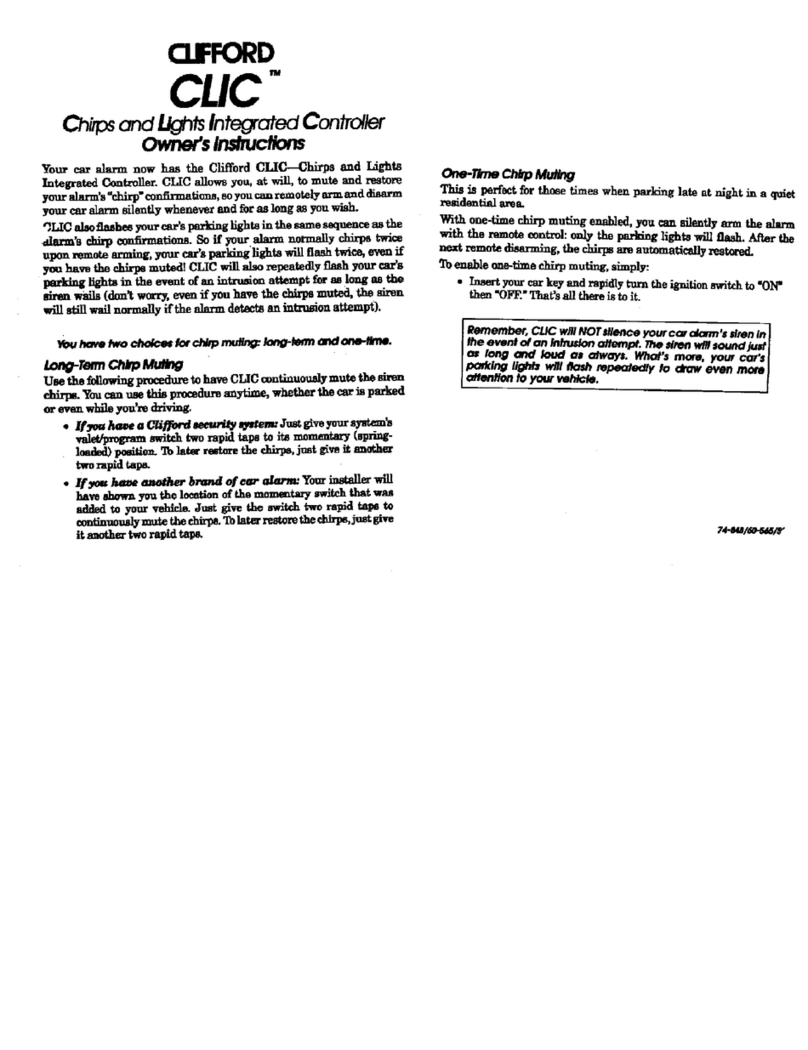
Clifford
Clifford CLIC Chirps and Lights Integrated Controller owner's guide
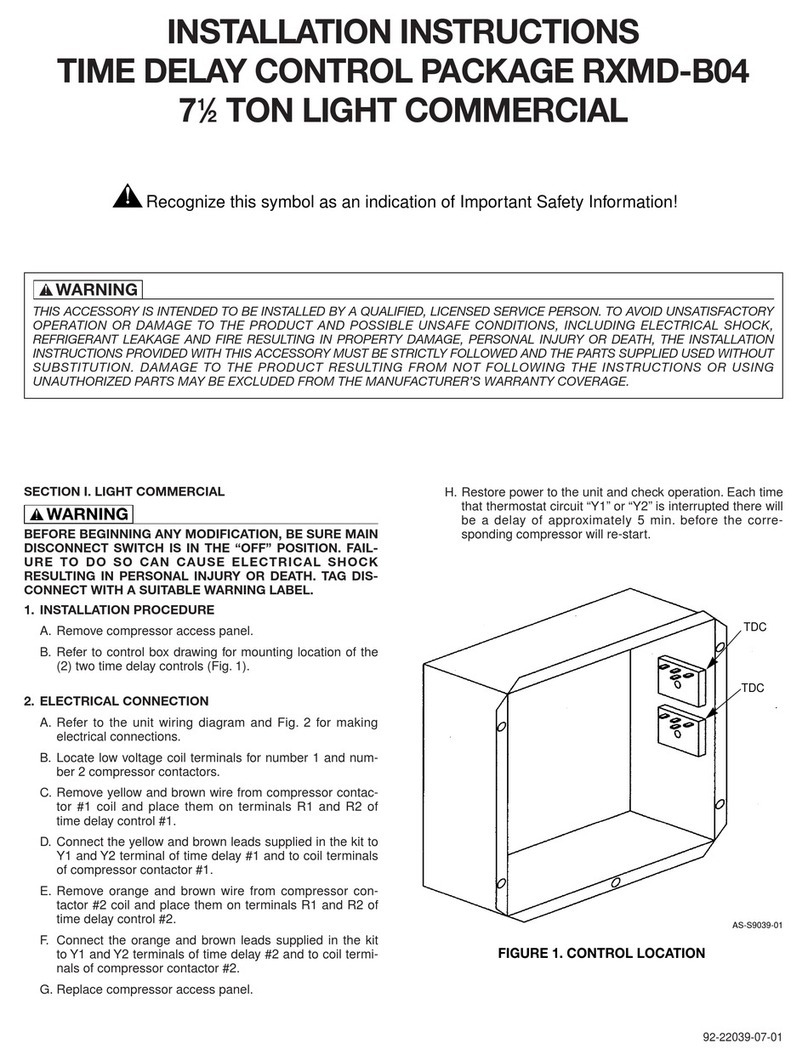
Rheem
Rheem RXMD-B04 installation instructions
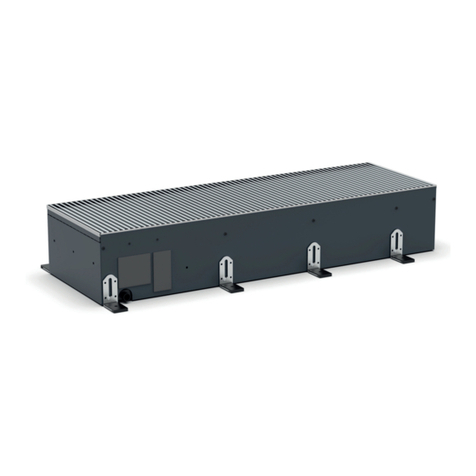
Jaga
Jaga Clima Canal JDPC.002 user manual
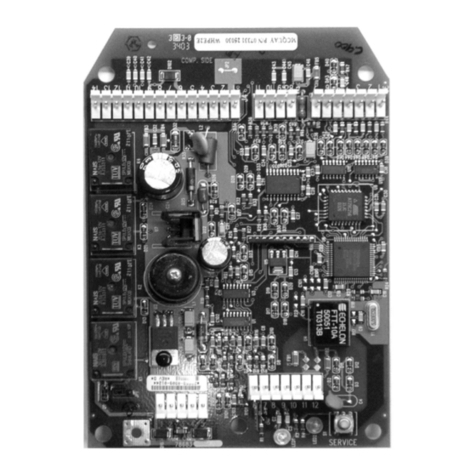
McQuay
McQuay MicroTech 2000 Installation and maintenance manual
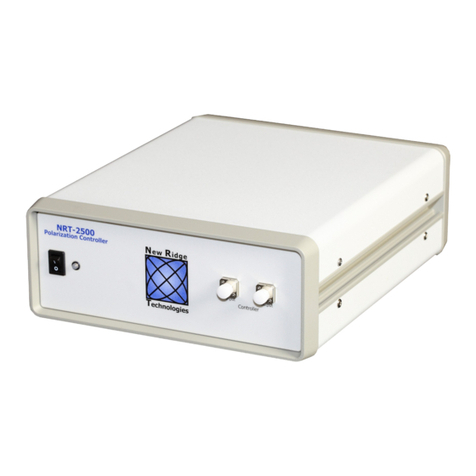
New Ridge Technologies
New Ridge Technologies NRT-2500 user manual

Omnia
Omnia UPH230/10 manual
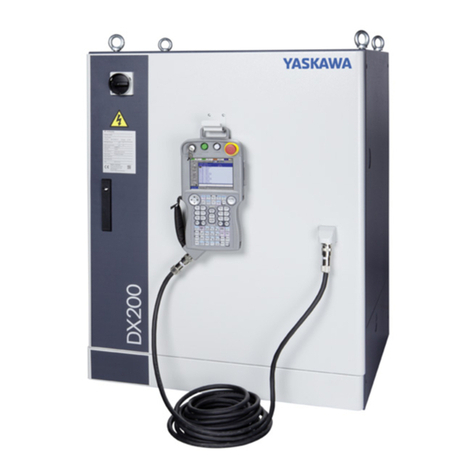
YASKAWA
YASKAWA Motoman DX200 Setup procedure

Mitsubishi Electric
Mitsubishi Electric MELSEC iQ-RD77MS2 user manual

Thermomax
Thermomax SMT 100 manual
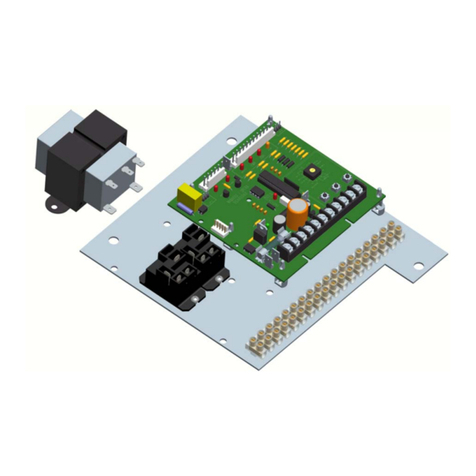
Manaras Opera
Manaras Opera M-85 Replacement and Installation Instructions

VIA Technologies
VIA Technologies Area-51 m5700 user manual

Marvell
Marvell GT-64260A Design guide
